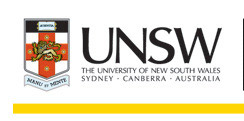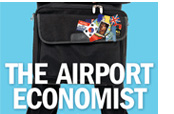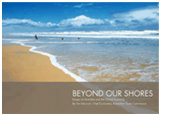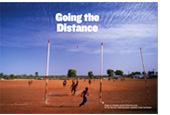Uruguay – the plucky country
by Tim Harcourt*
Reporting from Montevideo, Uruguay
Uruguay is the classic small player who `punches above it weight’. It only has 3.3 million people and is dwarfed by its larger neighbors Brazil and Argentina. But economically it historically was a wealthy country. According to Uruguay´s Deputy Economy Minister, Luis Porto in 1870 Uruguay – like Argentina and Australia – one of the world’s richest economies. This was was largely thanks to its rich agricultural endowment. For a small nation it was not only rich but also competitive on the world sporting stage. It won the inaugural FIFA Football World Cup in 1930 and then backed it up in 1950 in a shock 2:1 win over hotter than hot favorites host nation Brazil at the newly built Maracana Stadium in Rio de Janeiro in front of 200,000 people (mainly shocked Brazilians who have been haunted by the result ever since).
When Uruguay was wealthy it was known as the ‘Switzerland of the southern hemisphere’ but in the modern context the best comparison is probably with New Zealand. New Zealand and Uruguay have a lot in common. Both are small countries dependent on agriculture, services and tourism and are also economically tied to the fortunes of their neighbors. But whilst New Zealand has benefited from having ´The Lucky Country´Australia as its main next door neighbor, Uruguay has had Argentina. Argentina´s woes are well documented (see my companion piece ´Don’t buy from me, Argentina) and Uruguay is strongly influenced by the boom bust cycle of the Argentine economy in terms of trade flows. But Uruguay also has Brazil next door, and the fortunes of their enigmatic neighbour have been on the up in the past decade compared to poor performances overall in the 1980s and 1990s.
In fact, Uruguay, Brazil, Argentina Paraguay and Venezuela make up the common market trade pact MERCOSUR. And it would be expected that Uruguay, like Chile could benefit from being a small open economy opening up to other nations including its economically larger neighbours. But unlike Chile (see Red Hot Chile Peppers the world with FTAs) Uruguay can’t sign up to an FTA with another country without the permission of its Mercosur partners. In fact, Uruguay finds itself almost squeezed by the new divide in Latin America. The nations who have formed the Pacific alliance and looked towards institutions like APEC, Mexico, Chile, Peru and Colombia have largely supported free trade and open economies even when the global financial crisis of 2008 was at its worst. On the other hand nations like Argentina, Venezuela and Bolivia have supported protectionist and populist policies, partly in response to the excesses of the IMF in the region (and elsewhere) during the 1990s. the question remains about the eleephant in the room, Brazil, and which way it will fall. When I was in Mexico, most Mexican economists and business representatives claimed Brazil was already going down the protectionist path, particularly when it comes to Mexican industrial products (see The Mexican Moment) but the world is hoping Brazil will keep an open economy stance as it gain more economic weight on the global scale. In any case, Uruguay may be keen to be seen as a ‘Pacific style´ South American nation in terms of philosophy but not so in terms of geography on the Atlantic side of the continent wedged between Argentina and Brazil and with Mercosur acting as a straight jacket in terms of its further trade liberalisation aspirations. many Uruguyan businesses also compalined that despite the existence of Mercosur most of their goods and services got tied up in behind the border red tape in both Brazil and Argentina.
So what about Australia and Uruguay? Again its a case of a small population but plenty of energy and influence. There are around an estimated 30 000 Uruguayans in Australia, mainly of whom were in exile during military rule. As democracy is well entrenched now many of have returned to investment in Uruguay’s highly lucrative agricultural sector. Agriculture is the main focus of Australian investment, with collaboration between Australian and Uruguayan R & D and agribusiness technology. Trade and investment ties are greatly assisted by the very active Uruguayan Australian Chamber of Commerce which aspires to be like the Israel Australian Chamber of Commerce – another organistaion that seems small in trade terms but larger than life in terms of business outcomes. There is also some Australian presence in Uruguay. The fast ferry you take from Buenos Aires to Montevideo is made by Incat in Tasmania and there are a number of Uruguyan-Australians who are prominent in farming and business community organistaions.
Australia´s Ambassador to Argentina, Uruguay and Paraguay, Patricia Holmes believes that mining is potentially attractive investment opportunity for Australia but it was notiecable that Uruguay, like Colombia, Argentina and some other South American countries was still undergoing a debate about mining and its impact on farm land and the environment. Again, like in Colombia, Australia has the opportunity to help develop corporate social responsiblity (CSR) practices, to help achieve a mining industry that is environmentally sustaianble and in sync with agricultural development as well.
Uruguyan business interests were also surprised (pleasantly) by the Australian model of consensus (built up under the Hawke Keating Government’s Prices and Incomes Accord) and the capacity of trade unions and business to work together in Australia´s recent past on economic and industry issues. Whilst not as divided as the Argentinian polity, Uruguay still struggles to get its main interest groups around the table in the national interest.
In some ways the Uruguyan psyche is fed by being caught between two large neighbours and finding it therefore difficult to shine. They are also mindful that they can’t keep living on past glories whether its economically back to 1870, or in football terms dining out on the glorious World Cup winning teams of 1930 and 1950. But Uruguay also is a rugby nation as well as a football nation and in fact the national team ‘ the teros’, were on the same plane as the airport economist flying out of Monetvideo on the way to Buenos Aires and onward to Qatar and Hong Kong for the Hong Kong Sevens (the airport economist will also be in Hong Kong during the Sevens but that timing is of course a coincidence!). So perhaps a rugby analogy is appropriate. The teros may never reach the dizzy heights of the almighty New Zealand All Blacks, but economically being a small successful trading nation like New Zealand punching above its weight in the international business arena is not a bad thing to be. It may no longer be ‘the Switzerland of the southern hemisphere’ as it was in 1870 but now being the New Zealand of South America may suit Uruguay given its committment to openess, excellence, human capital development and occassionally being able to knock larger players off. In short, Uruguay can live up to its reputation for being ´the plucky country´ (´El Pais Corajudo´).
*Tim Harcourt is the J.W.Nevile Fellow in Economics at the University of New South Wales, Sydney, Australia and author of The Airport Economist www.theairporteconomist.com
He travelled to Uruguay courtesy of the Australian Department of Foreign Affairs and Trade (DFAT) and the Council of Australian Latin American Relations (COALAR). Thanks are due to Ambassador Patricia Holmes, Lisa Davidson, Magdalena Luppi, Norma Ramiro and Fernando Perez Tain for organising the visit to Montevideo. He would like to thank his hosts – the Uruguyan Australian Chamber of Commerce and Australia´s Honorary Counsul Diego L.Paysse for hosting his visit to Uruguay.













No Comments so far ↓
Comments are closed.